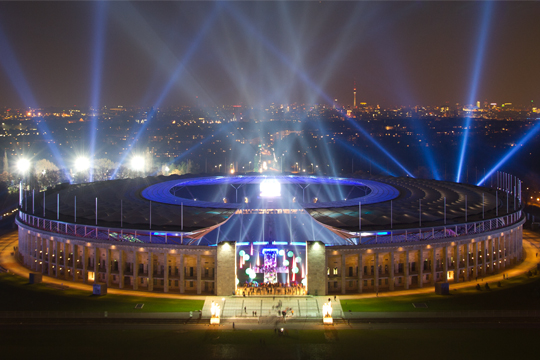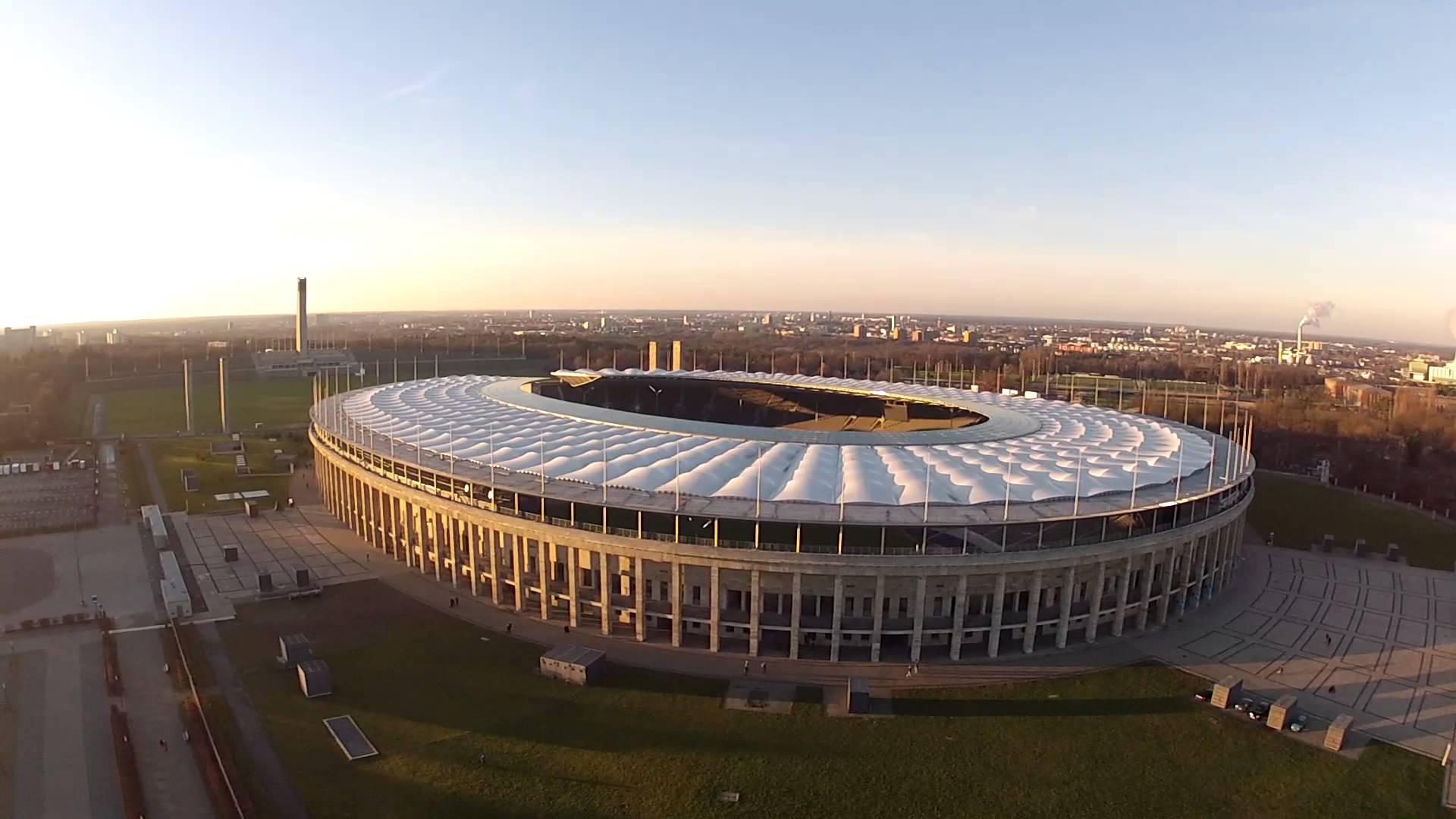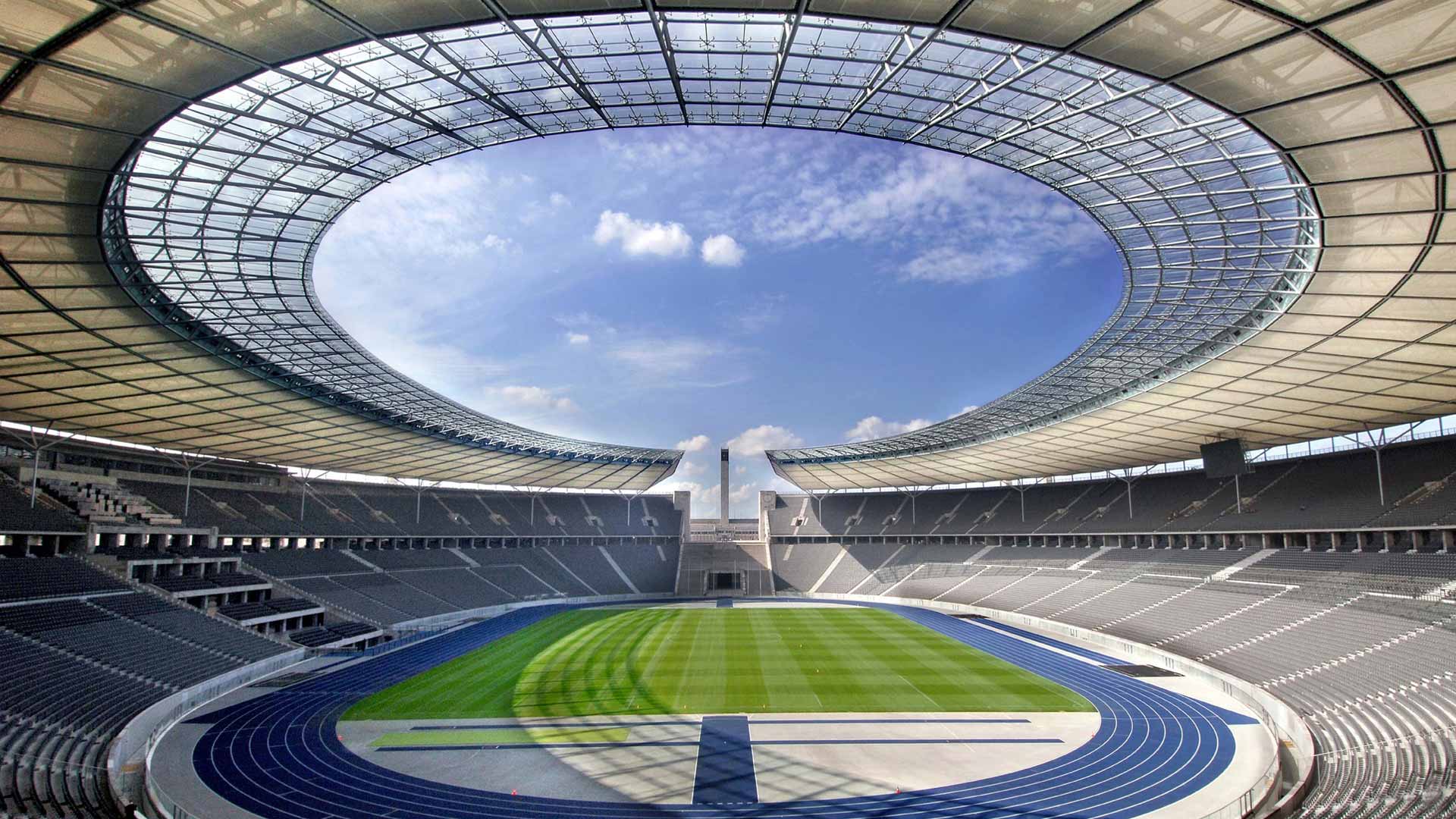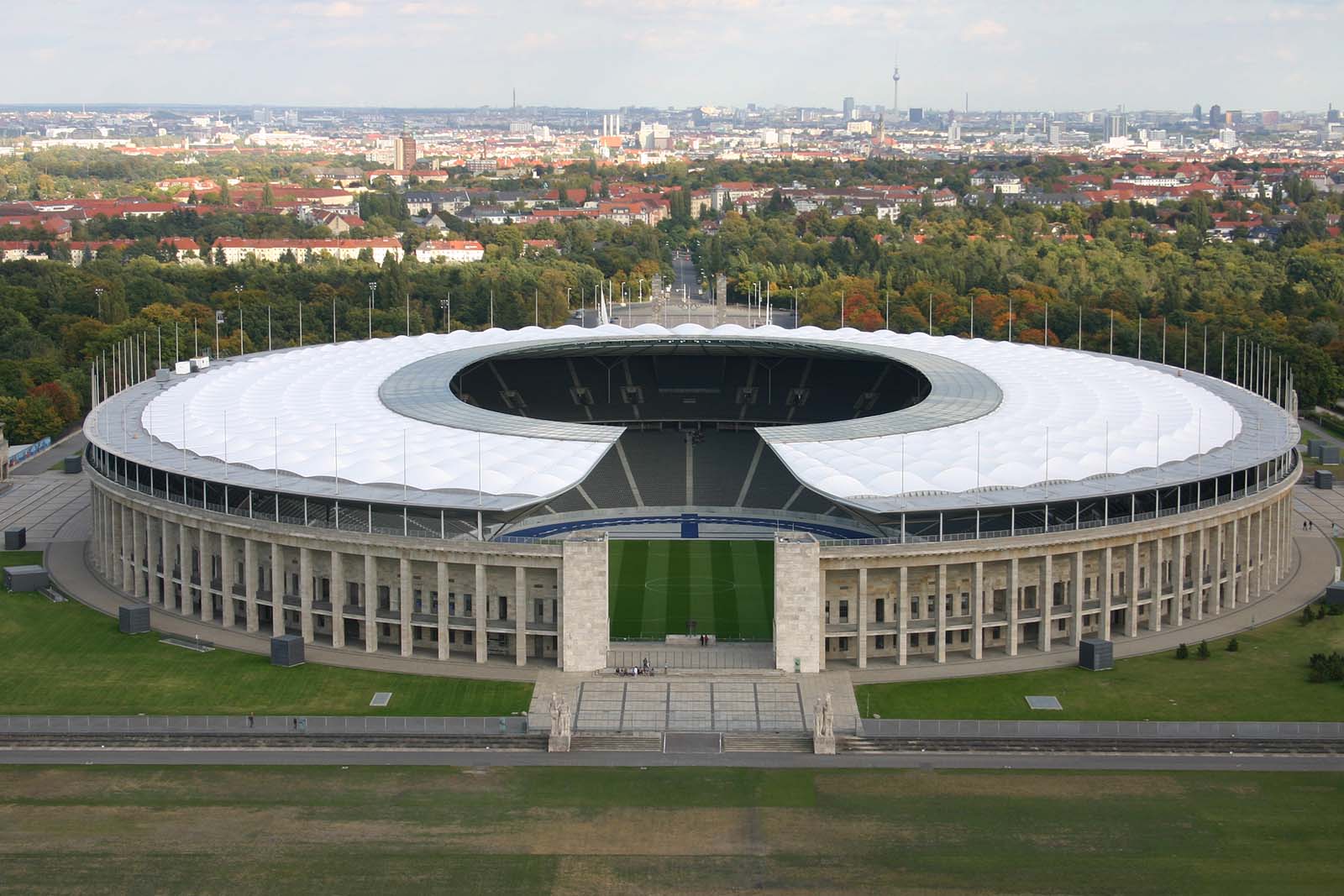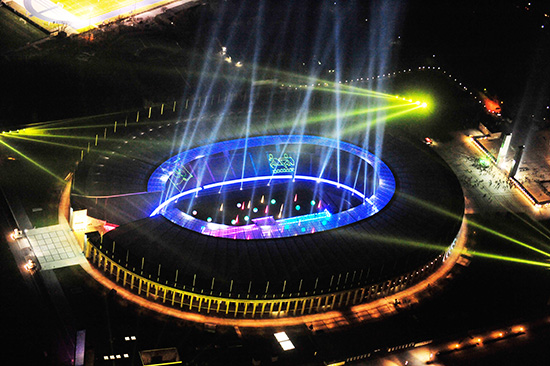The Olympiastadion (German pronunciation: [oˈlʏmpi̯aˌʃtaːdi̯ɔn]) is a sports stadium in Berlin, Germany. It was originally built for the 1936 Summer Olympics by Werner March. During the Olympics the record attendance was thought to be over 100,000. Today the stadium is part of the Olympiapark Berlin.
After renovations in 2004 the Olympiastadion offers a permanent capacity of 74,475 seats and is the largest stadium in Germany for international football matches. Olympiastadion is a UEFA category four stadium and one of the world's most prestigious venues for sporting and entertainment events.
Aside its use as an athletics stadium, the arena built up a footballing tradition. Since 1963 it has been the home ground of Hertha BSC football team. It was used for 3 matches in the 1974 FIFA World Cup. It hosted six matches, including the final, in the 2006 FIFA World Cup and was renovated for that reason. The German Cup (DFB-Pokal) final match is held each year at the venue. The Olympiastadion Berlin served as a host for the 2011 FIFA Women's World Cup as well as the 2015 UEFA Champions League Final.
Stadium
Renovation
70,000 cubic metres (92,000 yd3) of concrete and 20,000 cubic metres (26,000 yd3) of pre-cast reinforced concrete elements were used. 12,000 cubic metres (16,000 yd3) of concrete was demolished and removed and 30,000 cubic metres (39,000 yd3) of natural stone was refurbished.
The roof was extended to cover a total of 37,000 square metres, with 20 roof-supporting columns carrying a weight of 3,500 tonnes of steel.
With the intention of creating a more intimate atmosphere for football games, the playing field was lowered (even more) by 2.65 metres (8.7 ft); approximately 90,000 cubic metres (120,000 yd3) of sand was excavated. The lower tier of seating in the stadium was demolished and rebuilt at a completely different angle of inclination.
The conservation factor of the Olympiastadion as a historical monument was also considered, especially with respect to the preservation of the natural stone blocks. After criticisms, the colour of the athletics track around the game field was changed from red to blue, reflecting the colours of Hertha BSC.
Technical details
The roof rises 68 metres over the seats and is made up of transparent panels that allow sunlight to stream in during the day. The western portion (on the Marathon Arch) is open to reveal the Bell Tower to the spectators.
The Olympiastadion was equipped with the latest technology in artificial illumination and sound equipment. It has 113 VIP stands, a set of restaurants, and two underground garages (for 630 cars).
Capacity
The new Olympic Stadium has the highest all-seated capacity in Germany. It has a permanent capacity of 74,475 seats.
The upper tier has 31 seating rows at an average slope of 23 degrees and houses 36,455 seats, of which 36,032 are regular seats, 290 are seats on the press stand and 133 are seats in skyboxes. The lower tier has 42 seating rows at an average angle of 25,4 degrees and houses 38,020 seats, of which 32,310 are regular seats, 560 are box seats, 563 are lounge seats (expandable to 743), 4,413 are business seats and 174 are wheelchair spaces.
For certain football matches, such as those between Hertha BSC and FC Bayern München, the capacity can be temporarily expanded. This is made by the addition of mobile grandstand over the Marathon Arch. The extended capacity reached 76,197 seats in 2014.
The only stadiums in Germany that have higher total capacities are the Signal Iduna Park in Dortmund and the Allianz Arena in Munich. However, the Signal Iduna Park and the Allianz Arena have both seating and standing areas, and their all-seated capacities are lower than that of the Olympiastadion. The total capacity of the Allianz Arena is also lower than the extended capacity of the Olympiastadion.
Tenant
The stadium has been used as the home venue for the Fußball-Bundesliga's Hertha BSC since 1963. In 1963, the Bundesliga was formed, and Hertha BSC participated by direct invitation, leaving its old stadium (the "Plumpe") to use the Olympiastadion. On August 24, it played the first local match against FC Nuremberg, with the final score 1:1. However, in 1965, the German Football Association found Hertha BSC guilty of bribery and relegated them to the Regional Leagues.
In 1968, Hertha returned to the first division, and to the Olympiastadion, and in 1971 sold "Plumpe". The second half of the 1970s was quite successful for Hertha BSC Berlin. In 1979, it reached the semifinals of the UEFA Cup, but was defeated by Red Star Belgrade. Hertha reached the finals of the German Cup twice (1977 and 1979). In the 1980s, Hertha had a declining role in the Bundesliga, and fell to the Regional Leagues in 1986, although they later recovered reaching the Second Division (1988–1989).
With the demolition of the Berlin Wall in November 1989, a spontaneous feeling of sympathy between Hertha and 1. FC Union Berlin from Eastern Berlin arose, which culminated in a friendly match at the Olympiastadion with 50,000 spectators (January 27, 1990). In 1990, Hertha returned to the First Division, although it fell again to the Second Division from 1991 until 1997. Since 1997, the club has improved, climbing up the Bundesliga table and qualifying for the UEFA Champions League, with matches against top European teams like Chelsea and A.C. Milan.




